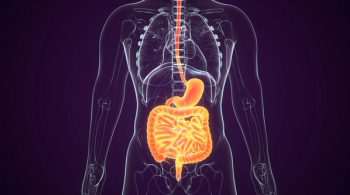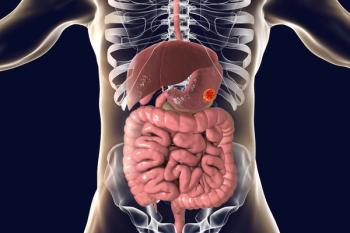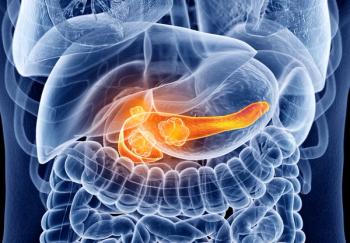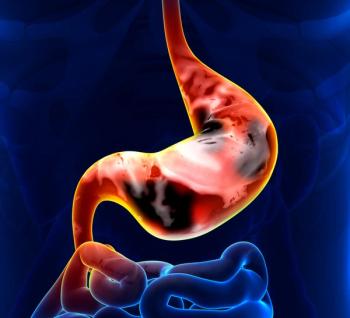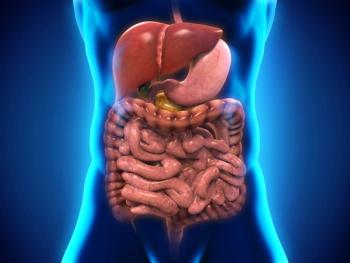
Oncology NEWS International
- Oncology NEWS International Vol 9 No 1
- Volume 9
- Issue 1
Oral 5-FU Compound Offers Safety Advantage in Treatment of Advanced Colorectal Cancer
NEW YORK-A new oral combination chemotherapy regimen is as effective as intravenous fluorouracil (5-FU) and leucovorin, the current treatment standard, but with a superior safety profile. Speaking at the Chemotherapy Foundation Symposium XVII, Paulo Hoff, MD, assistant professor of medicine, M.D. Anderson Cancer Center, described the use of an oral regimen combining uracil/tegafur (UFT) and leucovorin as first-line treatment of metastatic colorectal cancer.
NEW YORKA new oral combination chemotherapy regimen is as effective as intravenous fluorouracil (5-FU) and leucovorin, the current treatment standard, but with a superior safety profile. Speaking at the Chemotherapy Foundation Symposium XVII, Paulo Hoff, MD, assistant professor of medicine, M.D. Anderson Cancer Center, described the use of an oral regimen combining uracil/tegafur (UFT) and leucovorin as first-line treatment of metastatic colorectal cancer.
Tegafur is a prodrug that is converted to 5-FU by hepatic enzymes, Dr. Hoff said. Uracil biochemically modulates 5-FU, producing increased and sustained levels of the compound. The two have been available as a single capsule in Japan since 1984.
Bristol-Myers Squibb filed for FDA approval of UFT in March 1999, and the agent was recently given a favorable recommendation by the FDAs Oncologic Drugs Advisory Board for its use along with leucovorin tablets (see ONI, November 1999, page 4).
When approved, Bristol-Myers Squibb plans to market the combination of UFT and oral leucovorin under the name Orzel. The combination would be the first oral therapy for colorectal cancer, enabling patients to receive chemotherapy at home, Dr. Hoff said.
He described two multinational phase III trials that compared an oral UFT/leucovorin regimen with intravenous 5-FU/leucovorin. Patients randomized to the oral arm received 300 mg/m²/d of UFT plus 75 mg/d (first study) or 90 mg/d (second study) of leucovorin, divided into three daily doses, for 28 consecutive days with 1 week off between cycles. The control regimen was intravenous 5-FU (425 mg/ m²) and leucovorin (20 mg/m²) daily for 5 days every 28 days (first study) or 35 days (second study).
In both studies, the two arms were equivalent in terms of response rate (12% in the first study and 11% in the second study for UFT/leucovorin vs 15% and 9%, respectively, for the IV regimen); median survival (12.4 and 12.2 months vs 13.4 and 11.9 months); and median time to progression (3.5 and 3.4 months vs 3.8 and 3.3 months).
The oral combination showed itself superior in the incidence and severity of adverse effects, Dr. Hoff said. He hypothesized that toxicity in the UFT arm was reduced because exposure to 5-FU was protracted with the oral agent, ie, patients received a less intense dose over a longer period of time.
Although severe diarrhea, nausea, and vomiting were seen in comparable numbers in the two regimens, febrile neutropenia occurred in 0% to 3% of patients in the UFT arms of the studies vs 13% to 31% in the IV arm. Likewise, the incidence of stomatitis and mucositis was much lower with the oral regimen.
The convenience of the oral regimen is likely to appeal to patients and physicians alike, he said, and it has the potential to reduce treatment costs.
Articles in this issue
almost 26 years ago
New Strategies for Treating Ovarian Canceralmost 26 years ago
Researchers See More Effective Lung Cancer Screening, Therapyalmost 26 years ago
Goserelin Reduces Breast Ca Recurrence in Younger Womenalmost 26 years ago
ODAC Recommends Approval of Targretin for Advanced CTCLalmost 26 years ago
IOM Assessing Early Breast Cancer Detection Technologiesalmost 26 years ago
CRFA Honors Three With Its 1999 FrontLine Awardsalmost 26 years ago
Aromasin, New Hormonal Agent, Approved for Breast Canceralmost 26 years ago
LEDs Developed by NASA Used to Ablate Brain Tumorsalmost 26 years ago
Early Androgen Deprivation Beneficialalmost 26 years ago
Higher-Dose RT May Improve Prostate Cancer OutcomeNewsletter
Stay up to date on recent advances in the multidisciplinary approach to cancer.


